AMiGo - A 2 Channel x 2k x 2k Camera for the Wendelstein Telescope
Claus A. Gössl, Wolfgang Mitsch, Werner Altmann, Jan Snigula,
Ulrich Hopp, Heinz Barwig
First light of AMiGo at the 0.8m Wendelstein Telesope...
... finally in March / April 2008. Because of problems with the
original detector system the camera was redesigned to work with 2 FLI
cameras each equipped with a 2k x 2k Fairchild 15 mu CCD. See some
images...
Adding filters...
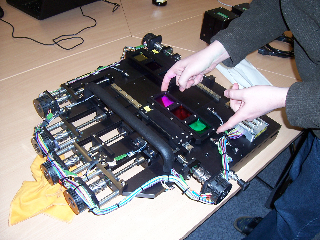 |
... assembled...
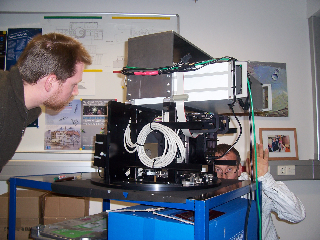 |
... add some wiring...
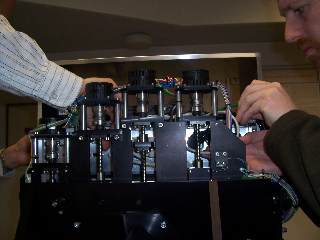 |
... flipping downside up...
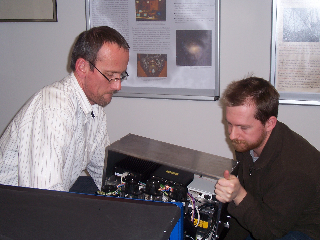 |
Is it clean and shiny?
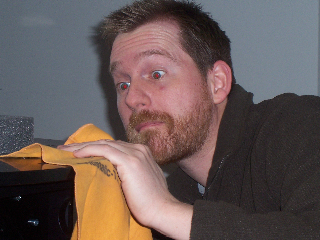 |
Trouble with imperial non-metricism...
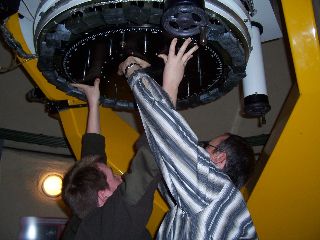 |
... leads to dissembling...
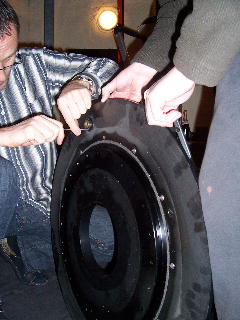 |
... and some heavy headwork.
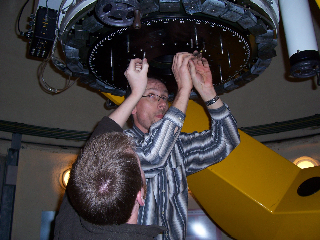 |
Mounting the beast...
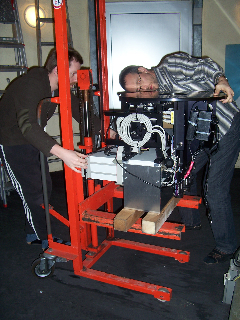 |
... and: "Yee-haw!"
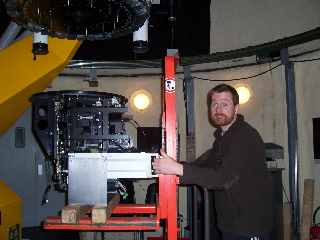 |
Which is which?
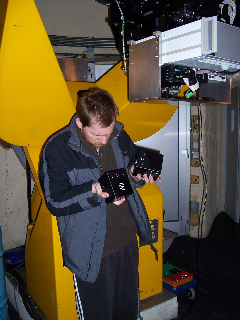 |
Aim on target with the 80cm flak.
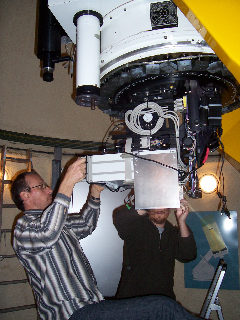 |
Full cover! Checking the drapings.
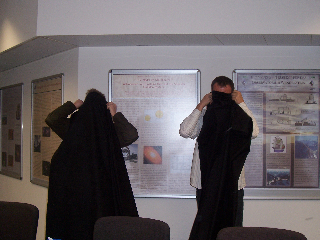 |
Bagged, ...
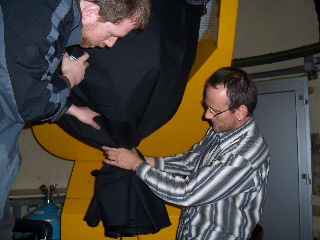 |
... spent, and done.
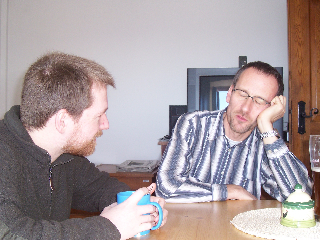 |
And ta-dah! Here we go...
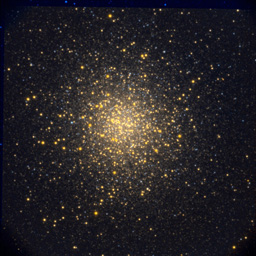 |
This a color composite of two two-channel 60 s exposures with AMiGo at
the 0.8m WST telescope taken during the first light run on march 31st
2008 around 02:10 CET (telescope unguided, camera not aligned).
|
AMiGo will be the spare for both, first light instrument and the 3 channel
camera of the new WST 2m telescope.
Original Design
We presented the design of a compact two-channel CCD-camera for the 0.8
m Cassegrain telescope operated at the Wendelstein Observatory at the
SPIE 2002 conference on Astronomical Telescopes and Instrumentation.
(Proceeding article.)
To achieve a high efficiency this camera is equipped with two
channels, operating in the wavelength range of 400 - 540 nm and 570 -
900 nm, respectively.
Each channel is provided with a filter slider for three positions, an
independent photometric shutter, and a 2k x 2k CCD (80% peak
efficiency).
The camera can simultaneously record a red and a blue image in its
30 mm x 30 mm image plane.
In addition it has an offset guider and supports robotic operation.
The development of the camera was supported by DFG grant Ho1812/3-1.
Some Sketches and Drawings
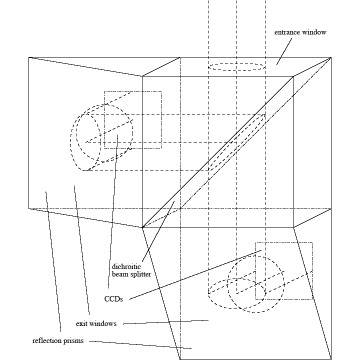
Design sketch of the dichroitic beam splitter:
Light falling in from "above" is split within the 80 mm x 80 mm x 80
mm beam splitter cube in a reflected, left side, blue beam and a
transmitted, downwards, red beam.
Both beams are reflected by adjacent reflection prisms and leave the
unit "backwards" to fall on their corresponding 30 mm x 30 mm CCDs
resting in the same image plane after a 60 mm gap which holds filters,
shutters and cryostat windows.
The 160 mm massive glass results in having a wavelength dependent
focus length.
This can be compensated by filters of an individually matched
thickness, which are inserted between the beamsplitter and the CCDs.
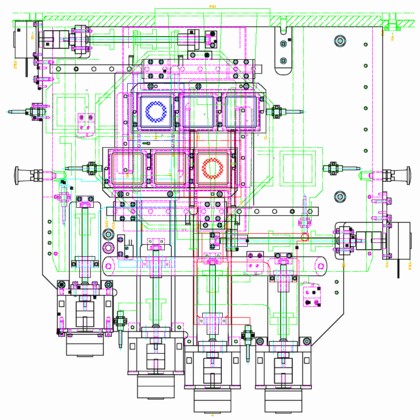
Filter / shutter module:
The design drawing shows a front view of the shutter (background) and
filter slider module detailing also the motors and limit switches.
The telescope flange is on the top side of this view.
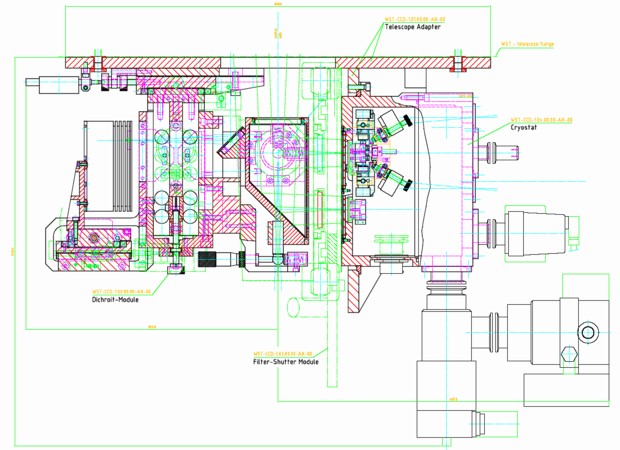
Camera overview:
The Beam from the telescope enters top down and is split and
redirected rightwards in the dichroit module, then passing through
the filter / shutter module and finally focusing in the cryostat module.
Pictures of the Assembling Phase
As of October 2004 the camera is still in the assembling phase.
Most parts are delivered and we can already give some preview images
of the "hardware".
Two images of the optics:
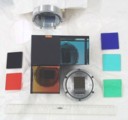
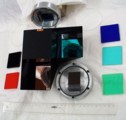
You can see the both CCD detectors (one also multiple mirrored by) the
dichroitic beam splitter, the cryostat windows and the filters.
Two images of the central montage tower:


The tower holds both the dichroitic beamsplitter unit, which can be
adjusted in all axes, and the motorized offset guiding module.
The rotational adjustment axes cross all in one point centered on the
dichroitic surface.
Three images of the shutter / filter module:



The covers of the shutter as well as the filters are missing to
gain a better view of the inner parts.
Three images of the cryostat integration test:



Before the cryostat parts get their goldening they are assembled for a
mechanical test.
... and another three of the inner parts:



... after the goldening took place.
First public presentation of the "real" thing:



Took place on the "Lange Nacht der Sterne" (18th Sept. 2004) in the former
"forum der technik" at "Deutsche Museum".
email -> 
Go back to my homepage

















































